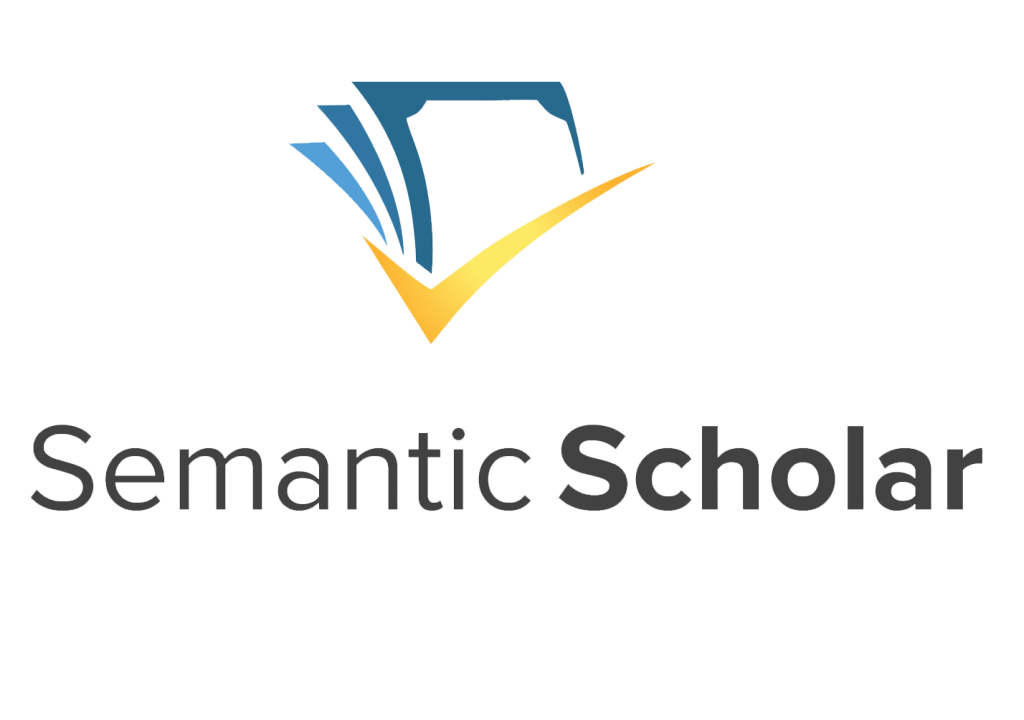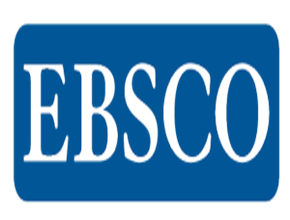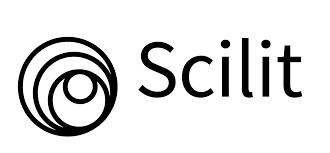High-Performance Thermoelectricity in Ferrocene Molecular Wires
DOI:
https://doi.org/10.32792/utq/utjsci/v12i1.1281Abstract
The transport characteristics of the ferrocene trimer molecule and its reaction to temperature changes were investigated theoretically Here, we have conducted a theoretical comparison of the thermoelectric and electrical characteristics of four distinct ferrocene trimer topologies. Our findings show that the bonding type and connectivity between ferrocene trimer units significantly affect the regulation of quantum interference (QI) and the enhancement of thermoelectric characteristics indicating that these structures are excellent candidates to serve as materials for numerous thermoelectric applications and as thermoelectric enhancers such as Cooling/heating, power generation, and heat flux sensors.
Received:2024-07-11
Revised:2024-08-16
Accepted:2024-09-05
References
[1] J. Peng, B. Zhang, B. Yin, D. Liu, Y. Qiu, and H. Zhang, "Optimizing thermoelectric performance in molecular junction: The role of van der Waals interface coupling with boron-doped electrodes," Results in Physics, p. 107832, 2024.
[2] R. Toscano-Negrette et al., "Theoretical study of the thermoelectric properties through a single-molecule junction of Zinc Porphyrin," Physica E: Low-dimensional Systems and Nanostructures, vol. 161, p. 115970, 2024.
[3] R. H. Sakban, M. D. Noori, and S. M. Abdulalmohsin, "Radical Enhancement Electric and Thermoelectric Efficiency of Graphene Nano constrictions," Solid State Technology, vol. 63, no. 1, pp. 1788-1793, 2020.
[4] F. N. Ajeel, A. B. Ahmed, and A. M. Khudhair, "Enhanced thermoelectric figure of merit in graphene nanoribbons by creating a distortion and transition-metal doping," Nano-Structures & Nano-Objects, vol. 38, p. 101164, 2024.
[5] A. A. K. Al-mebir, M. D. Noori, and B. B. Kadhim, "Tuning the Electrical and Thermoelectric Properties of Phthalocyanine and Metallo-Phthalocyanine Molecular Junction," in Journal of Physics: Conference Series, 2021, vol. 1999, no. 1: IOP Publishing, p. 012036.
[6] D. Stefani et al., "Large conductance variations in a mechanosensitive single-molecule junction," Nano letters, vol. 18, no. 9, pp. 5981-5988, 2018.
[7] K. Nakada, M. Fujita, G. Dresselhaus, and M. S. Dresselhaus, "Edge state in graphene ribbons: Nanometer size effect and edge shape dependence," Physical Review B, vol. 54, no. 24, p. 17954, 1996.
[8] M. D. Noori, Quantum Theory of Electron Transport Through Photo-Synthetic Porphyrins. Lancaster University (United Kingdom), 2017.
[9] J. S. Junias and J. Clement, "Predictive analytics of conductance and HOMO-LUMO gaps with topological descriptors of porphyrin nanosheets," Physica Scripta, vol. 99, no. 1, p. 015208, 2023.
[10] M. Noori et al., "Tuning the electrical conductance of metalloporphyrin supramolecular wires," Scientific reports, vol. 6, no. 1, p. 37352, 2016.
[11] T. J. Seebeck, Magnetische polarisation der metalle und erze durch temperatur-differenz (no. 70). W. Engelmann, 1895.
[12] T. A. Hussein and M. D. Noori, "Investigation Electrical and Thermoelectrical properties of Ferrocene in staggered and eclipsed conformations," in Journal of Physics: Conference Series, 2021, vol. 1973, no. 1: IOP Publishing, p. 012055.
[13] D. Preesam, M. Noori, and H. Moghaddam, "The Effect of Linker Group on Thermoelectric Properties of Dimer Zinc Porphyrin-Based Molecular Junctions," University of Thi-Qar Journal of Science, vol. 10, no. 2, pp. 177-180, 2023.
[14] M. D. Noori and A. A. Al-Jobory, "Tuning the Thermoelectric Properties of Ferrocene Molecular Junctions," in IOP Conference Series: Materials Science and Engineering, 2018, vol. 454, no. 1: IOP Publishing, p. 012143.
[15] J. C. Scott, "Metal–organic interface and charge injection in organic electronic devices," Journal of Vacuum Science & Technology A: Vacuum, Surfaces, and Films, vol. 21, no. 3, pp. 521-531, 2003.
[16] N. Darwish, I. Díez-Pérez, S. Guo, N. Tao, J. J. Gooding, and M. N. Paddon-Row, "Single molecular switches: electrochemical gating of a single anthraquinone-based norbornylogous bridge molecule," The Journal of Physical Chemistry C, vol. 116, no. 39, pp. 21093-21097, 2012.
[17] M. A. Rampi and G. M. Whitesides, "A versatile experimental approach for understanding electron transport through organic materials," Chemical Physics, vol. 281, no. 2-3, pp. 373-391, 2002.
[18] G. Bhatt, A. Ghatak, and R. Murugavel, "Futuristic storage devices: Single molecular magnets of rare earths versus spin crossover systems of earth-abundant metals," Journal of Chemical Sciences, vol. 135, no. 2, p. 40, 2023.
[19] J. Cirera and E. Ruiz, "Modeling Magnetic Properties with Density Functional Theory‐Based Methods," Molecular Magnetic Materials: Concepts and Applications, pp. 419-446, 2017.
[20] S. Sanvito, "Molecular spintronics," Chemical Society Reviews, vol. 40, no. 6, pp. 3336-3355, 2011.
[21] M. Elbing et al., "A single-molecule diode," Proceedings of the National Academy of Sciences, vol. 102, no. 25, pp. 8815-8820, 2005.
[22] M. Josefsson et al., "A quantum-dot heat engine operating close to the thermodynamic efficiency limits," Nature nanotechnology, vol. 13, no. 10, pp. 920-924, 2018.
[23] H. Sadeghi, S. Sangtarash, and C. J. Lambert, "Oligoyne molecular junctions for efficient room temperature thermoelectric power generation," Nano letters, vol. 15, no. 11, pp. 7467-7472, 2015.
[24] A. A. Al-Jobory, Z. Y. Mijbil, and M. Noori, "Tuning electrical conductance of molecular junctions via multipath Ru-based metal complex wire," Indian Journal of Physics, vol. 94, no. 8, pp. 1189-1194, 2020.
[25] M. S. Abbasi et al., "Contemporary advances in organic thermoelectric materials: Fundamentals, properties, optimization strategies, and applications," Renewable and Sustainable Energy Reviews, vol. 200, p. 114579, 2024.
[26] A. R. Lafta and M. D. Noori, "Thermoelectric Performance of Metallophthalocyanine Molecular Junctions with CIP and CPP Configurations," Iraqi Journal of Applied Physics, vol. 19, no. 4B, 2023.
[27] A. C. Aragonès et al., "Control over near-ballistic electron transport through formation of parallel pathways in a single-molecule wire," Journal of the American Chemical Society, vol. 141, no. 1, pp. 240-250, 2018.
[28] M. D. Noori, "Electrical and thermoelectrical properties investigation of oligomeric ferrocene: Staircase versus flatcase," in AIP Conference Proceedings, 2021, vol. 2404, no. 1: AIP Publishing.
[29] G. Nemnes and A. Nicolaev, "Transport in ferrocene single molecules for terahertz applications," Physical Chemistry Chemical Physics, vol. 16, no. 34, pp. 18478-18482, 2014.
[30] H. Mizuseki, R. V. Belosludov, T. Uehara, S. U. Lee, and Y. Kawazoe, "Transport properties of nanoscale materials for molecular wire applications: A case study of ferrocene dimers," Journal of the Korean Physical Society, vol. 52, no. 4 PART 1, pp. 1197-1201, 2008.
[30] S. Yuan et al., "Theoretical studies of the spin-dependent electronic transport properties in ethynyl-terminated ferrocene molecular junctions," Micromachines, vol. 9, no. 3, p. 95, 2018.
[32] M. C. Böhm, "Electron correlation in weakly coupled transition metal dimers: Bimetallocenylenes and bimetallocenes," Theoretica chimica acta, vol. 60, pp. 233-268, 1981.
[33] J.-C. Wu et al., "Manipulating spin transport via vanadium− iron cyclopentadienyl multidecker sandwich molecules," The Journal of Physical Chemistry C, vol. 113, no. 18, pp. 7913-7916, 2009.
[34] L. Zhou, S.-W. Yang, M.-F. Ng, M. B. Sullivan, Tan, and L. Shen, "One-dimensional iron− cyclopentadienyl sandwich molecular wire with half metallic, negative differential resistance and high-spin filter efficiency properties," Journal of the American Chemical Society, vol. 130, no. 12, pp. 4023-4027, 2008.
[35] Y. Matsuura, "Tunnel magnetoresistance of ferrocene molecules," Chemical Physics Letters, vol. 692, pp. 174-177, 2018.
[36] M. E. Welker, "Ferrocenes as building blocks in molecular rectifiers and diodes," Molecules, vol. 23, no. 7, p. 1551, 2018.
[37] C. Lambert, "Basic concepts of quantum interference and electron transport in single-molecule electronics," Chemical Society Reviews, vol. 44, no. 4, pp. 875-888, 2015.
[38] J. M. Soler et al., "The SIESTA method for ab initio order-N materials simulation," Journal of Physics: Condensed Matter, vol. 14, no. 11, p. 2745, 2002.
[39] J. P. Perdew, K. Burke, and M. Ernzerhof, "Generalized gradient approximation made simple," Physical review letters, vol. 77, no. 18, p. 3865, 1996.
[40] J. Ferrer et al., "GOLLUM: a next-generation simulation tool for electron, thermal and spin transport," New Journal of Physics, vol. 16, no. 9, p. 093029, 2014.
Downloads
Published
License
Copyright (c) 2025 University of Thi-Qar Journal of Science

This work is licensed under a Creative Commons Attribution 4.0 International License.












